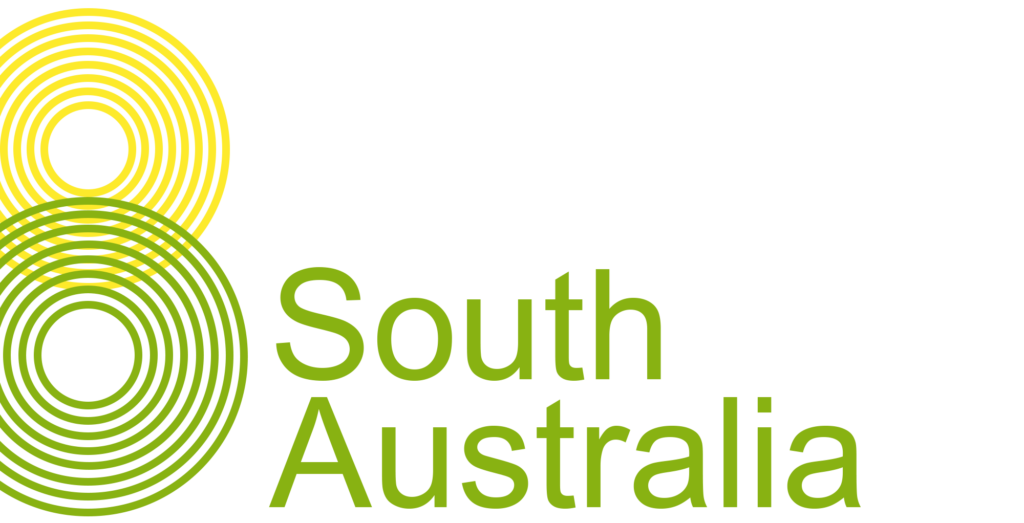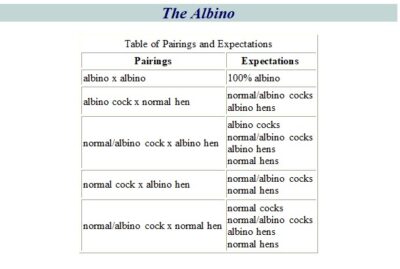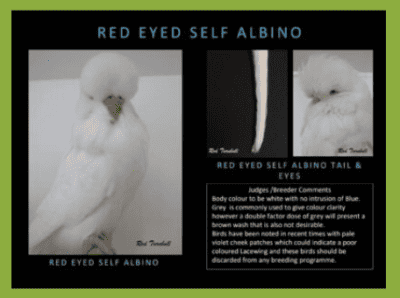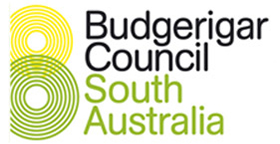
Albino Budgie (Budgerigar) – History
The Red Eyed Self Albino Budgerigar is the blue series equivalent to the Lutino. Referred to as a white budgie, these albino birds are blue series form of the Lutino. Several times in the late nineteenth century, the Ino budgerigar mutation was observed in the green series form (Lutino).

Image Courtesy of Rod Turnbull and the ANBC
However, the mutation disappeared, maybe due to a lack of breeding knowledge. Nevertheless, it reappeared between 1932 and 1936, in England, Europe, and Australia, and became solidly entrenched as a variety. The Albino gene is a blue series bird’s version of the Ino gene. To this end, the Ino is represented as a Lutino in a green series bird. Because the Ino factor suppresses all colours (except yellow), the birds in the blue series are pure white with pink eyes. Naturally, inhibiting melanin synthesis removes the budgie’s black markings and blue hues, resulting in a totally white plumage.
Albino Budgie – Identification
The back, rump, breast, flanks, and underparts are all a uniform shade of white. There are no markings anywhere, and the wings match the body colour. The mask is deep and broad (rather than cleft), and it extends beyond two large white cheek patches. Adult albino and lutino varieties feature a distinctive red eye with a white iris ring. In the unbroken cap form, this appears as a solid red eye. The primary flights approach the white body colour. Because of a lack of melanin, an albino’s feet and legs are pink. The male cock’s cere is flesh-colored, whereas the female hen’s cere is brown. The cheek patch, tail quill, and tail colour are pure white.
Those new to budgerigars easily confuse an Albino with a Double Factor Spangle White, a Dark Eyed Clear White, or a Lacewing. Each of these three varieties have similar features, but slight differences. For more details on the finite differences between these types, refer to The Standard. To clarify, the Spangle Double factor varies from the Albino on several fronts. Firstly, the feet on a Double Factor Spangle are grey, and the male has a regular blue coloured cere. Conversely, the Albino has pink feet and a flesh coloured cere. Secondly, the Spangle Double Factor also features silvery/white cheek patches, where the Albino has pure white cheek patches.
Likewise, the Lacewing is similar to the Albino in the sense it is a Cinnamon Ino. Naturally, it features red eyes and pink feet, however it exhibits strong brown markings that differ from the Albino. Finally, the Dark eyed Clear varies from the Albino through its distinctive full black eye. It has no iris ring, whereas the Albino has the distinctive red eye with iris ring.
Pairings to Produce an Albino Bird
The Albino gene is a sex-linked gene. Therefore, a male Albino can only produce female Albinos. Albinos for exhibition purposes need to feature little to no body suffusion. This is achieved by breeding them with grey factor birds. Some breeders have also used the Greywing gene in with the Grey to produce the most minimal suffusion possible. There are specialist Albino and Lutino bird clubs internationally, such as the Lutino and Albino Budgerigar Society (LABS) in the UK. These Clubs are a good source of information on best practice for these kinds of specialised breeding programs.

Click here to download the Pairing Expectations in full

- Click here to download the Red Eyed Self Albino Budgerigar in full

